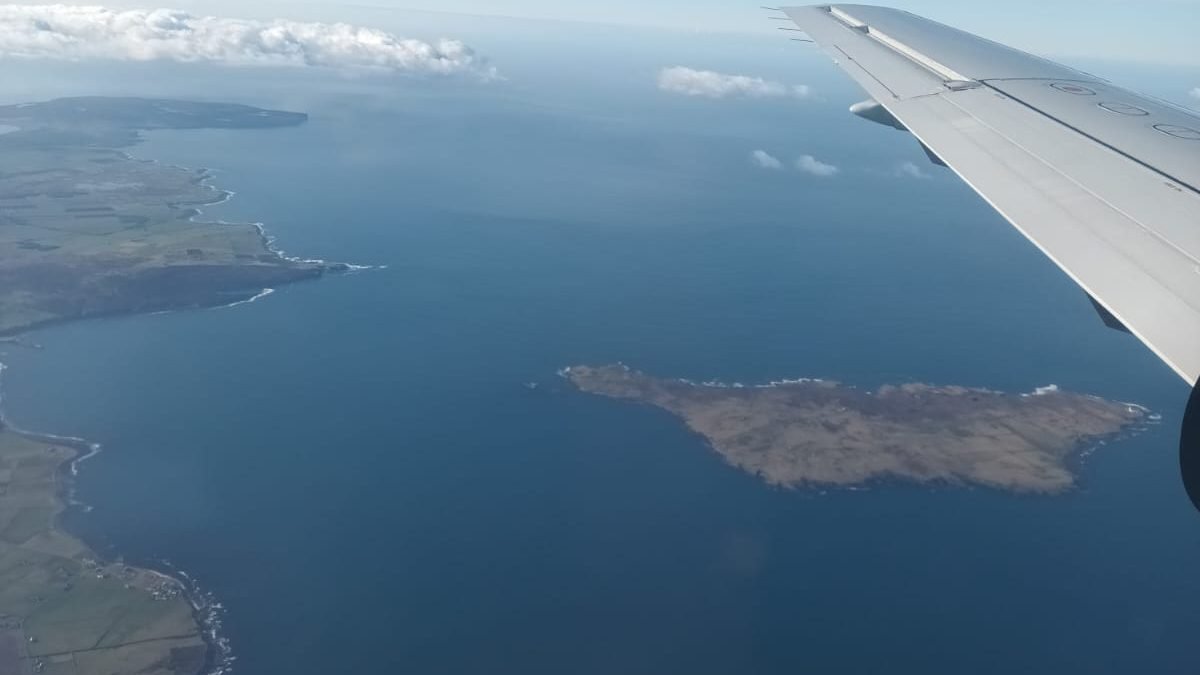Cranfield Aerospace Solutions (CAes) visited Scotland last week to experience firsthand the incredible innovation happening in the Scottish Highlands around zero-emissions flight.
What was the trip?
The purpose of the visit was for the CAeS team to see the Britten-Norman Islander – the aircraft which CAeS is converting to hydrogen-propulsion, in its natural environment performing short hops and serving rural communities in and around the Highlands.
Accompanied by Cranfield University and Cranfield Airport representatives, a key facet of the trip was to develop a deeper relationship and understanding of what Highlands and Island Airport and the Sustainable Aviation Test Environment (SATE) project happening at Kirkwall Airport, the European Marine Energy Centre (EMEC), and the Orkney Island Council are doing around hydrogen infrastructure.
The idea being that Cranfield as a future innovative hydrogen hub can learn from what’s happening in the Highlands, and learning can be reciprocated when we eventually fly from Cranfield. After all, collaboration is key to enabling zero-emissions flight.

Meeting the European Marine Energy Centre
A fascinating part of the trip was meeting with the European Marine Energy Centre (EMEC); seeing their combined heat and power hydrogen generator and learning about the tidal energy projects that were underway.
We were pretty blown away by the level of innovation in the Orkney Islands; a lot of the innovation happening is being driven by Orkney people and not from people coming in. It’s like its own little ecosystem of forward-thinking, open minded, intelligent people.
Experiencing a Loganair flight from Kirkwall to North Ronaldsay
The highlight had to be experiencing a Loganair flight on a Britten-Norman Islander from Kirkwall to North Ronaldsay, which gave us a real feel for the love that the locals have for the aircraft. The Islander is an absolute lifeline for the people of remote communities in the Highlands.
My colleague, Sam Lambert, who is CAeS’ Business Development Manager said: “Everyone we spoke to were so excited about the concept of hydrogen and zero-emissions becoming a reality, and the fact that the aircraft will be quieter too.”
A visit to the Loganair hangar was also on the agenda where we were able to talk Loganair’s Chief Pilot through the technology of the converted Britten-Norman Islander and what it is capable of.
Alongside Loganair’s Head of Sustainability Strategy Andy Smith, we spoke to the Herald Scotland about how we an Loganair are working closely on developing a ‘new wave of aviation that is emissions free.’
Click here to read the full article.

Opportunity of further services as a result of hydrogen aircraft
The Orkney Island Council were particularly interested in how a hydrogen-powered Islander could provide further services. For example, there are many teachers who have to fly into remote schools on a daily basis and currently its difficult for them to work on the scheduled flights for the general population. Thus, an additional zero-emissions flight could be tailored for them.
The team also met with Mark Shiner of the University of Highlands and Islands, who is quickly becoming the world’s authority on the safety of hydrogen. He works predominantly in the marine industry but his learnings can be transferred to the aviation sector, and will be instrumental in understanding protocols for airlines and operations using hydrogen.

Concluding thoughts
Overall CAeS’ visit to the Scottish Highlands was one of collaboration, learning and positivity. The level of ambition and positivity up there is infectious; it’s definitely something we want to emulate down at Cranfield.
Find out more about our hydrogen-powered aircraft solution here.
